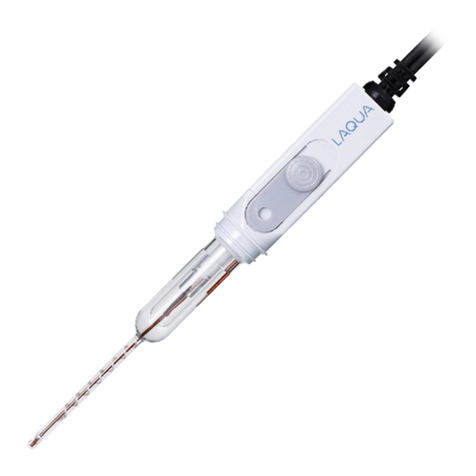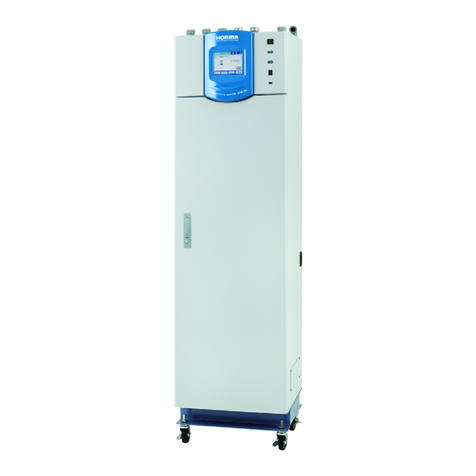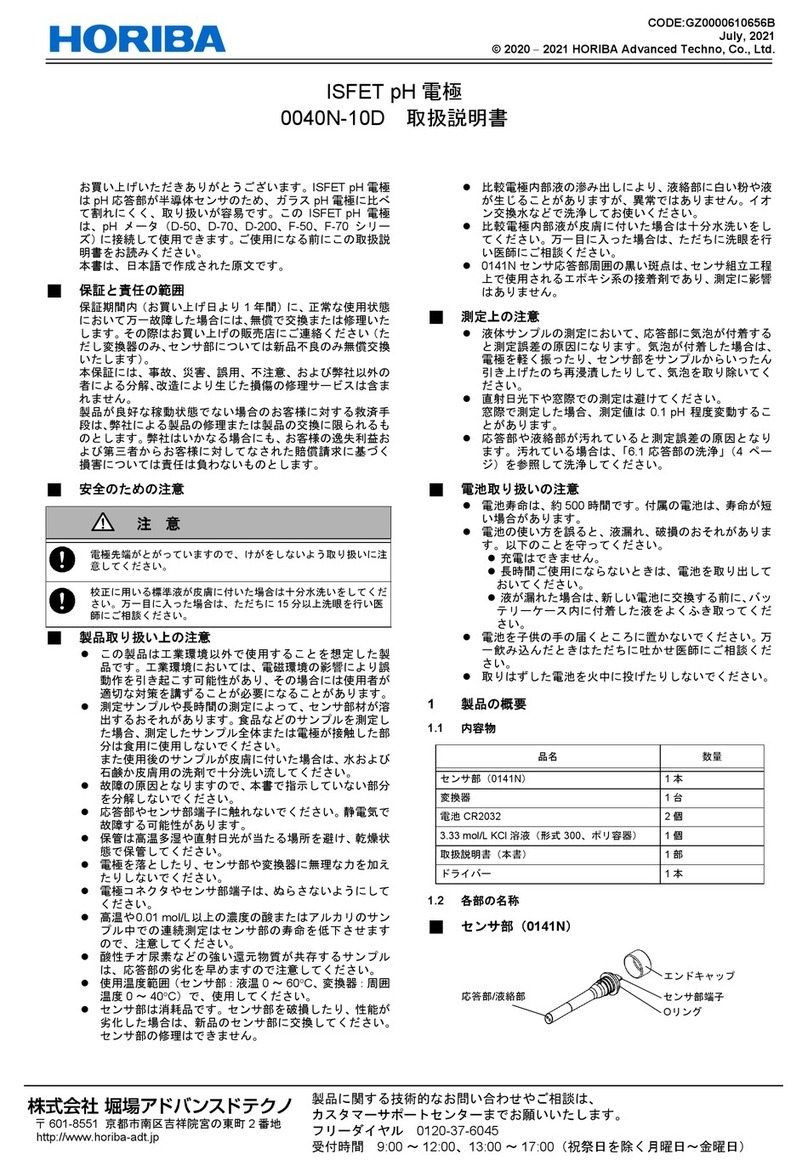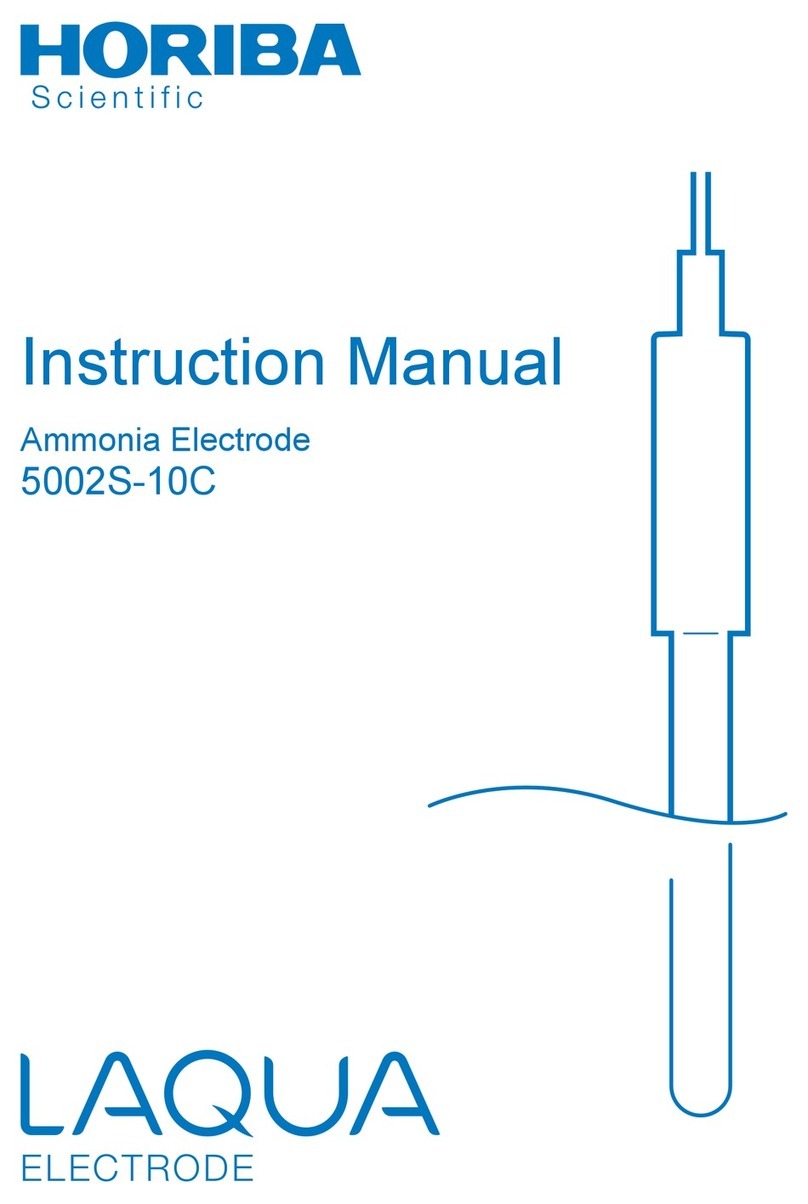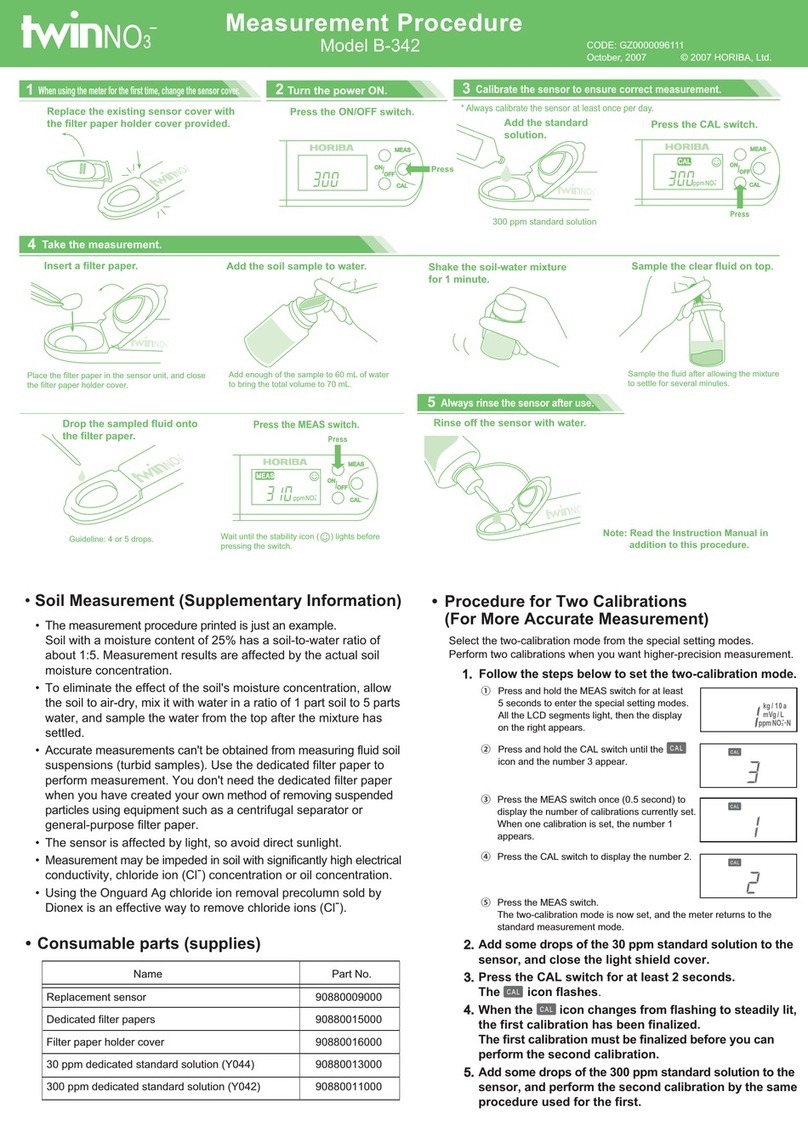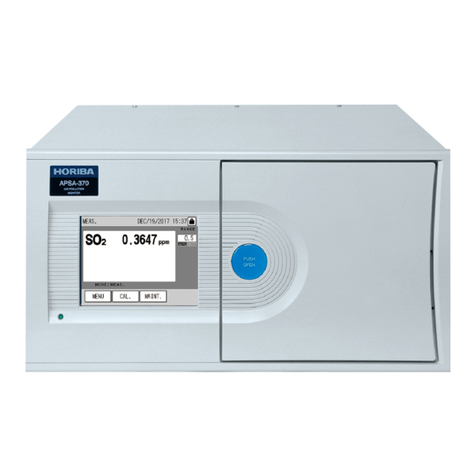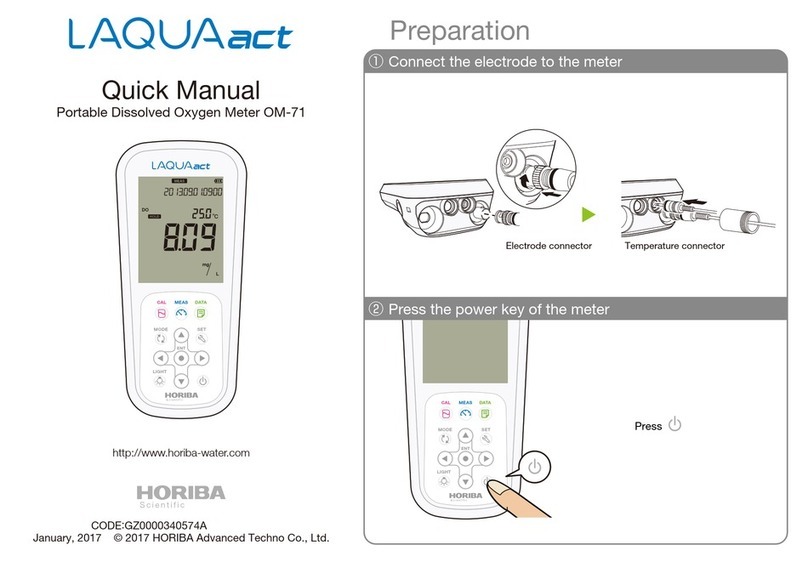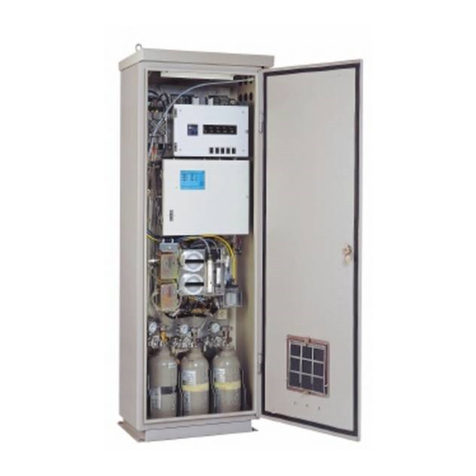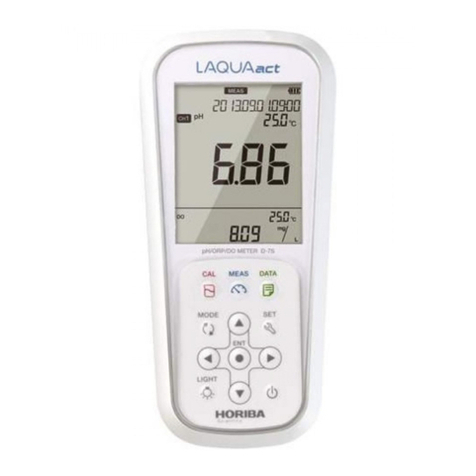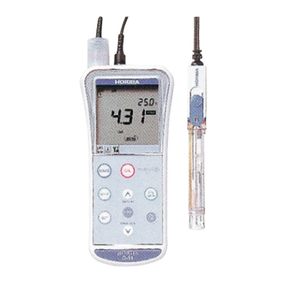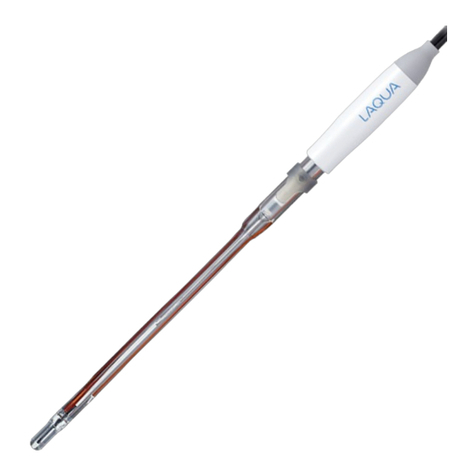
2
Preparation of measurement
After cleaning the electrode body, calibrate with a standard
solution or enter the cell constant written in the label on a
side of the electrode cap before use.
Cleaning method
Either wash the electrode body using a bottle that contains
pure (ion exchanged) water, or immerge the electrode in a
beaker containing pure water and lift the electrode up and
down a few times to rinse it, the wipe it dry using soft cloth.
Setting cell constant
The cell constant for this electrode is displayed on a side of
the electrode cap.
Enter the cell constant (shown as 0.954 × 0.1 cm-1 in this
example) of the electrode, by following the instructions in the
Operation Manual for the meter.
Example: 9371-10D LOT. ......
0.954 x 0.1 cm-1
Calibration
Calibrate with a standard solution which electrical
conductivity is close to the measurement sample. Follow the
instructions in the Operation Manual for the meter.
Measurement method
1. Immerse the electrode in the sample, so that the hole
part of the outer electrode is completely immerged
(Liquid level height is 35 mm or more.).
2. After immerging the electrode in the sample, lightly stir
the electrode around to optimize the contact area with
the sample and remove any air bubbles at the hole part
of the outer electrode. The air bubbles cause the shift of
the measured value.
When measuring pure water or other water having low
conductivity (100 μS/cm or less), theabsorption of Carbon
Dioxide from the air or other external interference may
affect results. In such case, measurement should take place
under air-tight conditions; or using a flow cell* (Code:
3200844642) is recommended.
*Pease refer to the flow cell column.
After measuring samples with high conductivity, rinse care-
fully residues on the electrode body with pure water before
measuring samples with low conductivity.
For more accurate measurements, wash the electrode body
with the sample.
Sample Hole part of outer electrode
There are sometimes air
bubbles at this position.
Maintenance
Wash the electrode carefully using pure water, to
remove any sample still clinging to the electrode.
If the electrode is very dirty and cannot be washed
correctly using pure water, clean with soft cloth and rinse
the electrode well using pure water.
If inorganic compounds are stuck to the electrode,
immerge the electrode in 5% nitric acid for appropriately
30 minutes.
Storage
Store in a dry state after wash the electrode carefully using
pure water.
Disposal method
When disposing of the electrode, follow the related laws
and/or regulations of your country/region. It is possible to
separate the cable part and the electrode part by cutting the
cable (Figure bellow). The cable part is classified as plastic*.
The electrode part is mainly composed of metal, but
contains hard plastic.
Flow cell
Flow measurement is possible by attaching the flow cell to
the electrode body. It is recommended when measuring low
electrical conductivity (100 μS/cm or less) samples.
Insert the electrode body to the bottom of the flow cell.
Flow the sample from the bottom of the flow cell to the
side.
Water pressure is up to 50 kPa.
Use a soft tube with an inner diameter of 5 to 6 mm.
Name
(See Specifications and
names of parts)
Disposal classification
Cable part Plastics
Electrode part
(Electrode body, cap)
Metals
(Containing hard plastics)
Instruction Manual,
Package Papers
*Disposal classifications depend on each country or region.
Electrode body
Cap of flow cell (PBT resin)
O ring (NBR rubber)
Sample outflow
Flow cell (Glass)
Sample inflow


